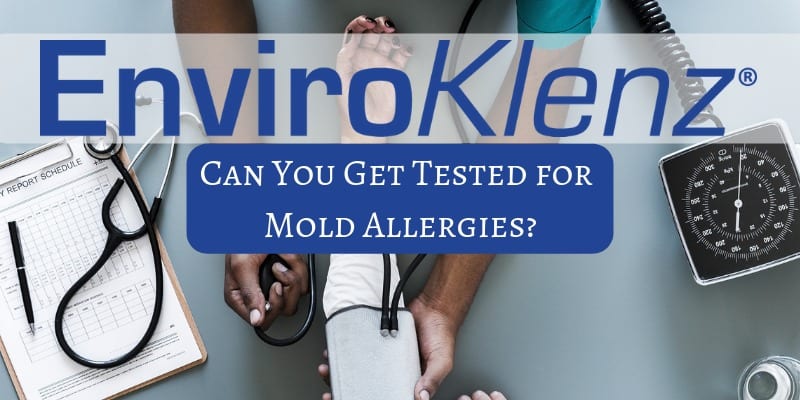To many people, allergies can be the bane of their existence. Their symptoms prevent many of us to function properly during our day. Although most of them are non life-threatening, we still want to live a life without them. Fortunately, there are many things we can do in order to avoid suffering from its symptoms and they always start with identifying what you are allergic to.
There are many types of allergies and mold allergy is one of them. It is caused by the spores produced by fungi that can grow indoors or outdoors. What sets mold apart from other allergens is that it can be anywhere. You can’t see it. Unlike a peanut butter allergy where you just have to avoid all kinds of foods that contain it, it is not easily prevented.
If you’ve been suffering from allergic reaction symptoms but can’t seem to pinpoint the culprit, you may have mold allergies. How will you know for sure? Is it possible to test mold allergies?
The answer is yes!
How Can You Test For Mold Allergies?
Mold allergies can be tested in two ways: through a skin prick test or a blood test.
In the skin prick test, samples of different molds in your area will be tested on your skin for reactions. Here you will be “pricked” on your arm or on the skin at your back. If you develop bumps where you were pricked, you are allergic to the mold.
For blood test, your immune system will be observed in terms of how it reacts to certain mold samples. To get the results, it will measure how sensitive your antibodies are to them. This process is also called radioallergosorbent test and it will test different types of molds.
 Tips For Dealing With Mold Allergies
Tips For Dealing With Mold Allergies
Once you get the results and find out that you indeed have mold allergies, the next step would be to determine the best course of action for you. You can opt to undergo treatment or medication. However, to manage the symptoms, you can make use of the following tips:
1. Protect your nose
When you are outside doing chores or errands that require you to deal with plants, it is best that you wear a mask to prevent inhaling pores. The mask will also help if you do this as much as you can, whether you are tending to your garden or just having a walk in the park. Remember that mold can be anywhere.
2. Reduce molds inside your home
As mold can develop indoors, and that’s where you stay most of the time, it is important that you maintain it to be clean and fresh. There are molds in the most unexpected places. Among the things you can do is make sure that your air conditioning has the right filter to trap the allergens. There are a lot of air filters that are suitable for any kinds of allergies. EnviroKlenz Mobile is one of the best air purifiers for allergies around.
Another thing you can do is purchase a humidifier. Fungi thrives in humid environments. You need to make sure that there is only enough moisture in the room to prevent molds from growing. Focus on cleaning areas where molds are most likely to develop. Examples of these areas are basements, kitchens, and bathrooms.
Mold allergies, once tested, can be managed in so many ways. Medication and/or treatment coupled with a clean and well-maintained environment will help you prevent suffering from the most severe symptoms.









